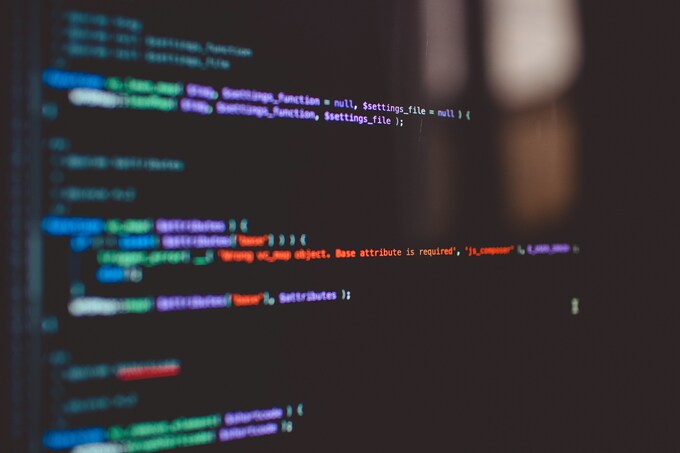Welcome to the world of Laravel and Microservices Architecture, where cutting-edge technology meets top-notch security measures! In today’s digital landscape, ensuring the protection of your applications is paramount. Let’s dive into how Laravel tackles security concerns within a microservices environment, equipping you with the knowledge to safeguard your systems effectively.
Key Security Risks in Microservices Architecture
Microservices architecture offers flexibility and scalability, but it also introduces unique security challenges. One key risk is the increased attack surface due to multiple services communicating over networks. This complexity can make it harder to monitor and secure each component effectively.
Another concern is data breaches, especially when sensitive information is shared between microservices. Inadequate access controls or improper handling of data can leave vulnerabilities for attackers to exploit.
The distributed nature of microservices can lead to communication issues that may result in unauthorized access or data leakage. Securing these inter-service communications is crucial in preventing potential threats.
Managing authentication and authorization across various services can be a daunting task, making it essential to implement robust identity management solutions.
Understanding and addressing these security risks are vital for ensuring the integrity and protection of microservices environments.
How Laravel Addresses Security Concerns
Laravel, known for its robust security features, offers multiple layers of protection to address security concerns in a microservices architecture. With built-in tools like CSRF protection, encryption key generation, and secure authentication mechanisms, Laravel ensures that your application is safeguarded against common vulnerabilities.
One way Laravel enhances security is through its ORM Eloquent, which helps prevent SQL injection attacks by automatically escaping user inputs. Additionally, Laravel’s middleware feature allows developers to filter HTTP requests entering the application, adding an extra layer of defense against malicious intent.
Laravel’s integrated support for implementing HTTPS protocol encrypts data transmission between servers and clients. This encryption significantly reduces the risk of sensitive information interception during communication processes within a microservices environment.
Leveraging Laravel’s comprehensive security functionalities and best practices in development workflows within a microservices architecture framework can help mitigate potential risks effectively.
Best Practices for Securing Laravel in a Microservices Environment
When it comes to securing Laravel in a microservices environment, there are several best practices that developers should follow to ensure the overall security of their applications.
Implementing proper authentication mechanisms is crucial. Utilizing Laravel’s built-in features such as Passport for API authentication can help prevent unauthorized access to sensitive data.
Encrypting sensitive information before storing it in databases or transmitting it over networks adds an extra layer of security. Laravel provides easy-to-use encryption methods that can be seamlessly integrated into your microservices architecture.
Regularly updating dependencies and libraries is another important practice to keep your Laravel application secure. Vulnerabilities are constantly being discovered, so staying up-to-date with patches and fixes is essential in maintaining a robust defense against potential threats.
Implementing strict input validation and output escaping can help mitigate common security risks like SQL injection attacks. By sanitizing user inputs and properly encoding outputs, developers can prevent malicious actors from exploiting vulnerabilities in the system.
Common Vulnerabilities and How to Avoid Them in Laravel
When developing microservices with Laravel, it’s important to be aware of common vulnerabilities that could compromise the security of your application. One common vulnerability is SQL injection, where malicious users can manipulate database queries. To avoid this, always use Laravel’s query builder or Eloquent ORM for parameterized queries.
Another vulnerability is cross-site scripting (XSS), which allows attackers to inject malicious scripts into web pages viewed by other users. Prevent XSS attacks by using Laravel’s built-in blade templating engine and escaping output data properly.
Insecure deserialization is also a risk, where untrusted data is processed without proper validation. Mitigate this by validating and sanitizing user inputs before processing them in your Laravel application.
Sensitive data exposure can occur if confidential information is not properly encrypted in transit or at rest. Ensure all sensitive data is encrypted using secure protocols and algorithms when handling it within your microservices architecture built with Laravel.
Advantages of Using Laravel for Secure Microservices Development
Laravel offers a robust framework for developing secure microservices by providing built-in security features that help mitigate common vulnerabilities. With Laravel, developers can leverage authentication and authorization mechanisms to control access to sensitive data and functionalities within the microservices architecture.
One advantage of using Laravel is its encryption capabilities, allowing developers to securely store and transmit data between microservices. Additionally, Laravel’s CSRF protection helps prevent malicious attacks by generating unique tokens for each request.
Another benefit of Laravel in microservices development is its validation mechanism, which aids in sanitizing user input and reducing the risk of injection attacks. By utilizing Laravel’s validation rules, developers can ensure data integrity across all microservices endpoints.
Laravel’s middleware functionality enables developers to implement additional layers of security logic at various stages of the request-response cycle. This flexibility enhances overall security posture within the microservices environment.
Conclusion
In the fast-paced world of microservices architecture, security is paramount. Laravel provides a powerful framework for building secure applications in this environment. By addressing key security risks, following best practices, and avoiding common vulnerabilities, developers can leverage Laravel to create robust and secure microservices.
With its built-in features like encryption, authentication mechanisms, and middleware support, Laravel offers a solid foundation for developing secure microservices. By staying updated on security best practices and continuously monitoring for vulnerabilities, developers can ensure that their Laravel-based microservices remain resilient against potential threats.
Laravel stands out as a top choice for those looking to develop secure microservices within a modern architecture. Its comprehensive security features combined with diligent implementation of best practices make it a reliable option for safeguarding data and maintaining the integrity of applications in today’s interconnected digital landscape.
